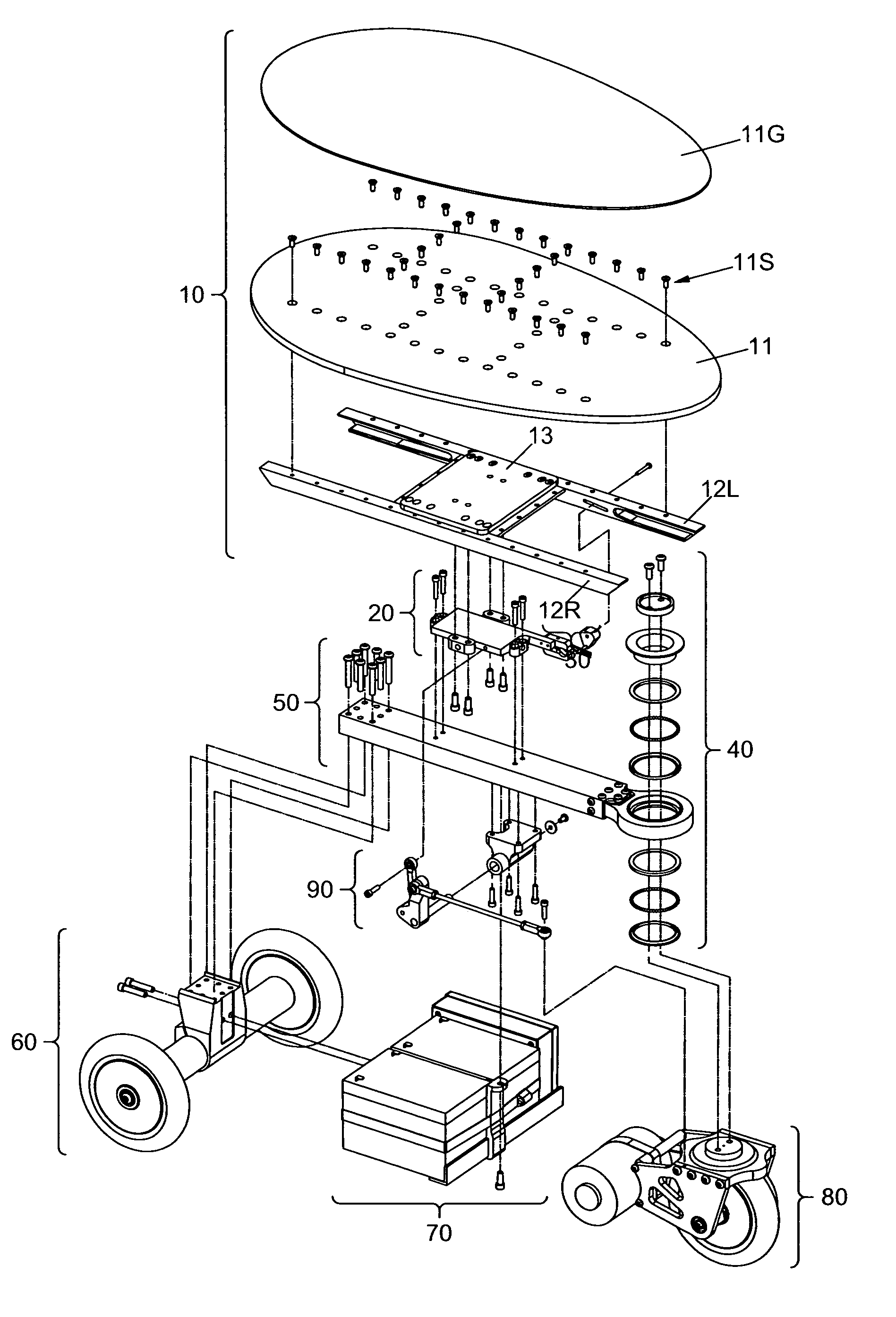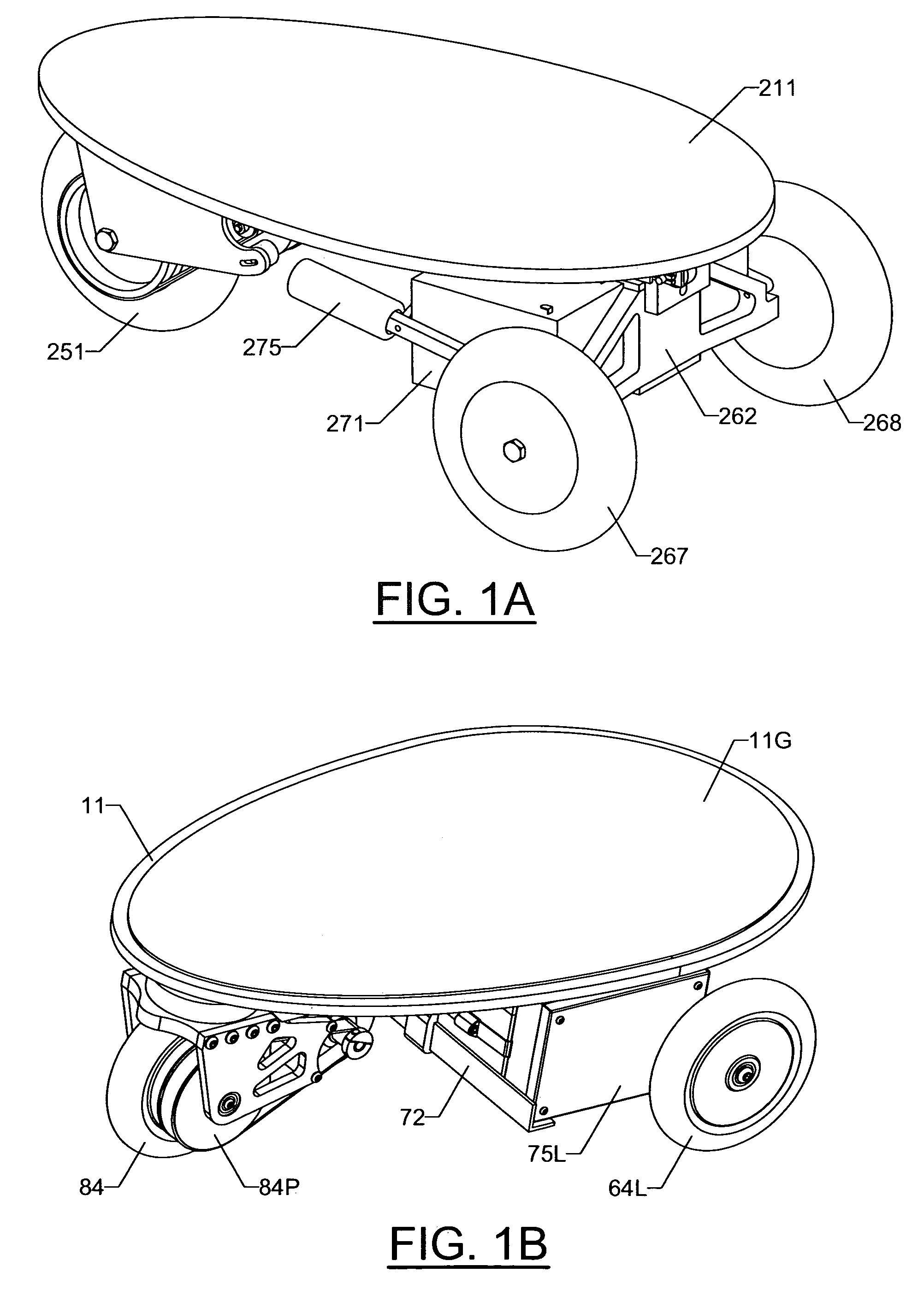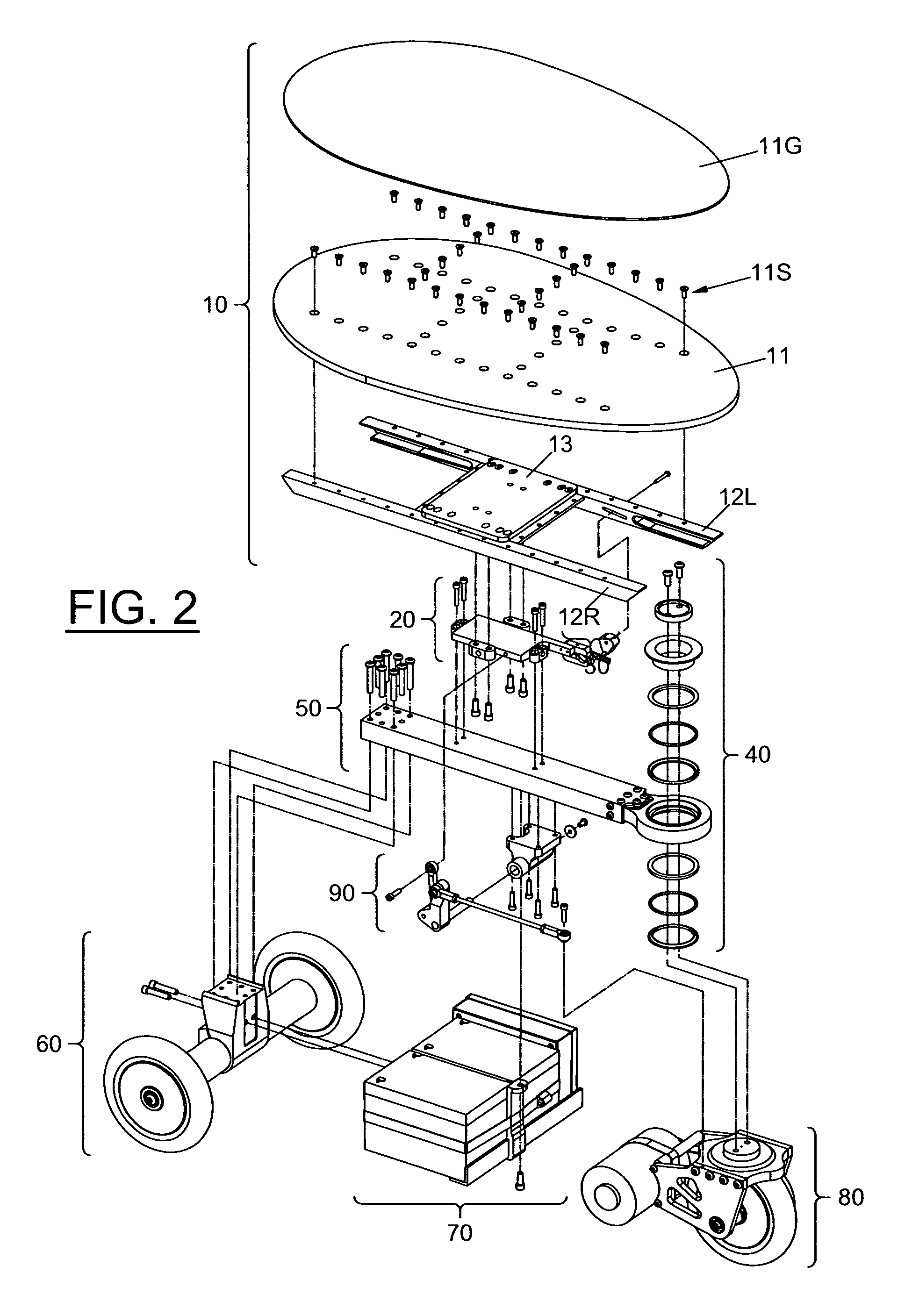Foot-controlled motorized vehicle
- Summary
- Abstract
- Description
- Claims
- Application Information
AI Technical Summary
Benefits of technology
Problems solved by technology
Method used
Image
Examples
first embodiment
Operation of First Embodiment
Overview of Acceleration and Deceleration (FIGS. 6A-6F)
[0080]In its resting position Deck 11 is approximately parallel to the ground and the vehicle moves neither forward nor backward. Acceleration, deceleration and reversal of the vehicle's direction are controlled by tilting Deck 11 either forward or backward. When the rider's weight is shifted forward over the front foot, Deck 11 tilts forward and the vehicle accelerates in that direction. When more weight is shifted to the rear foot, Deck 11 tilts backward and the vehicle accelerates in that direction. Acceleration and deceleration are variable so the vehicle responds in proportion to the amount of weight change.
Details of Acceleration and Deceleration
[0081]Deck 11 tilts forward or backward at the pivotal connection created by Throttle Pivots 14L &14R (FIG. 3) and Throttle Pivot Pins 22L &22R (FIG. 5A). As Deck 11 is tilted forward or backward, Throttle Pin 35 moves up or down causing a corresponding...
second embodiment
Operation of Second Embodiment
[0090]From the rider's standpoint, the second embodiment operates generally like the first embodiment. Please refer to FIGS. 6A-6F, FIGS. 7A-7F, and the “OPERATION OF FIRST EMBODIMENT” section above for a general understanding of this vehicle's operation.
Acceleration and Deceleration
[0091]Deck 211 may tilt either forward or backward in response to the rider's forward or backward weight placement (FIG. 8A). This tilting occurs because the Deck's substructure, Deck Bars 212&213 pivot upon Throttle Pivot Pin 223. The tilting causes Throttle Actuator Pin 233 to move up and down (FIG. 8B). The Actuator Pin pushes against the inside walls of the slot in Throttle Finger 232. This causes the wiper shaft on Throttle Potentiometer 231 to turn. Throttle Potentiometer 231 is connected to the motor speed controller (not shown) which is in turn connected to, and controls the speed and direction of, Motor 254 (FIG. 9A). The shaft of Motor 254 turns Front Wheel 251 bec...
PUM
 Login to View More
Login to View More Abstract
Description
Claims
Application Information
 Login to View More
Login to View More - R&D
- Intellectual Property
- Life Sciences
- Materials
- Tech Scout
- Unparalleled Data Quality
- Higher Quality Content
- 60% Fewer Hallucinations
Browse by: Latest US Patents, China's latest patents, Technical Efficacy Thesaurus, Application Domain, Technology Topic, Popular Technical Reports.
© 2025 PatSnap. All rights reserved.Legal|Privacy policy|Modern Slavery Act Transparency Statement|Sitemap|About US| Contact US: help@patsnap.com



